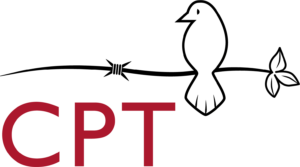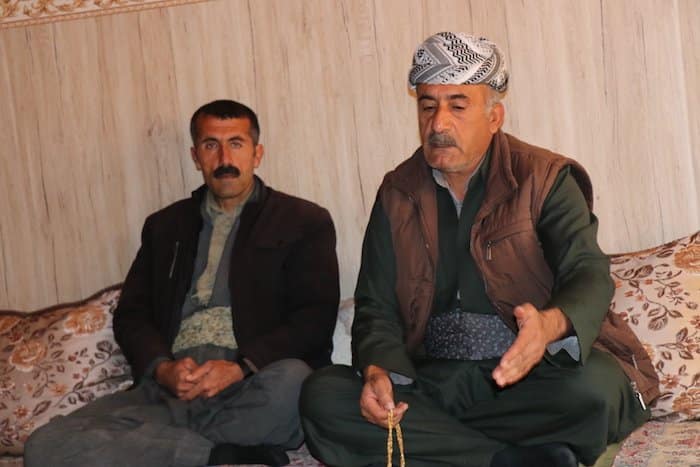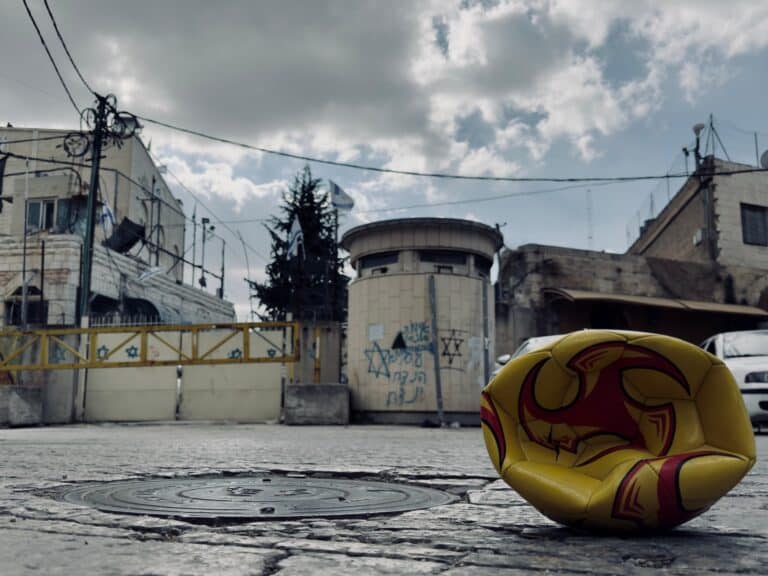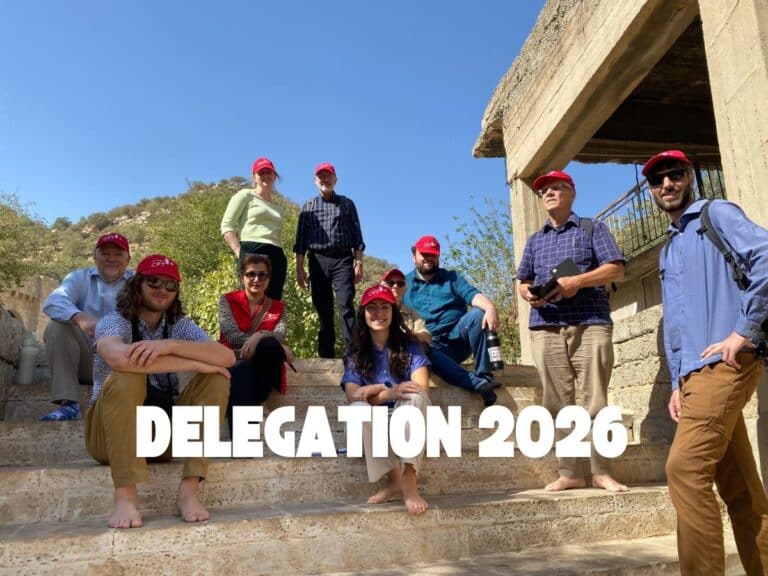Mam Qadir and his wife Bayan welcome us into the living room of their family home, with their sons and their only remaining daughter. If Zeitun had not been killed by an Iranian mortar in 2019 she would have been 21 years old, the oldest child of the family, the big sister on whose shoulder their heads would rest in times of sorrow. The mortar took everything – the house, all the trees that they had planted with their hands in the orchard – annihilating their hope to rebuild a home in their ancestral village of Bole. The mortar took their wealth and their dreams of return.
Even though the sound of drones could be heard at all times flying over their heads, reminding them that the Turkish occupation is watching, that at any time they might be suspected as PKK guerillas and bombed; even though they knew that the Iranians were watching them, that at any time they might be suspected as KDPI Peshmergas and shot at with mortars and artillery; they insisted on creating their haven, their way of returning to the land of their ancestors.
It takes a long time for a community to abandon the traditional ways of living, of relating, of connecting to the land, to the home and country. Mam Qadir’s family belongs to the Bradost tribe. Almost all the families of victims that I have met with the CPT-IK team belonged to the Bradost, Herki, and Surchi tribes, whose ancestral land stretched far beyond the artificial borders that Turkey, Iran and Iraq are still trying to impose on Zagrosian communities with genocidal violence.
The old local empires of Safavids and Qajars (in Iran) and the Ottomans (in what is now Turkey), tried to divide their territories with a stable border that cut right through the traditional land of Kurdish and other Zagrosian tribes and nations. But the local communities never cared about those borders. The Herki tribe continued moving far beyond the Iranian border into Eastern Kurdistan until the end of the 1970s. Cross-border marriages, trade, unauthorised traffic, pilgrimages to Muslim and indigenous holy sites, tribal negotiations and other community-related activities still continue. This territory is one of the last still-unoccupied areas of Kurdistan.
Now that several Iranian mortars had hit the house of Mam Qadir and his family, killed their 17-year-old daughter Zeitun, and injured their other son, they did not want to go back to Bole, so close to the Iranian border. They have not rebuilt the house and do not have any plans to do so.
One day, however, not long ago, several of Mam Qadir’s old friends, whose nomadic encampment was in the area, insisted that Mam Qadir go to visit. He wanted to experience the joy of togetherness with his kin and friends. He used to enjoy hunting, and he wanted to go for a hunt with them. When he tells the story, he shines, and one can see a slight smile under his moustache. He went for a hunt and he killed a wild rabbit.
Afterwards they came back to the encampment, ate food, cracked jokes and drank black sweetened cups of tea made over an open fire. They made themselves comfortable in their beds, planning to enjoy some highland sleep under the goat-hair tents.
Someone called and said that there would be an Iranian bombardment in the next couple of days; they needed to leave immediately. Word went around among the encampments and the exodus of all 500 families in the area was initiated. Mam Qadir helped his friends and his kin with the move. They had to gather everything up, take down the tents, round up the animals in order to lead them down the mountains and organise the transport with all the available cars and pickups. It reminded him of the big exodus in 1991, when most of the population of Iraqi Kurdistan left their homes for the borders fearing the return of the Baathist regime forces. Videos were published on the internet. Anyone who saw the caravan of fleeing nomads in the early morning was shocked, horrified, reminded, and retriggered.
Mam Qadir found himself in a mosque in a village outside Soran, where he lives now. “My eyes were full of dust,” he tells us. “It was as if someone had pushed dust into my eyes with their hands”. He did the Uthu ritual in the mosque, washing the dust from his eyes and his face, washing his arms and his legs and his forehead. He did the morning prayer and called Bayan to prepare breakfast for him. But he was so tired that, once he was home, he could not even eat it. He just lay on the floor and fell asleep until 2pm.
There was no bombardment during the next two days. But everyone knew what they fled from. One can rarely find someone among the Bradost, Herki and Surchi tribes who has not lost a friend, a cousin, a parent, kin or neighbour to the Turkish and Iranian bombardments, shellings, and drone attacks. This is how the cultural genocide against the indigenous peoples of the Zagros mountains works in its day to day activity. This is how mountains and villages of Kurdistan are depopulated and replaced by military bases and buffer zones. This is how mountains are forcibly cleared of their loyal custodians.
Surchi, Bradost and Herki are kin of the mountains. And kin does not forget kin. The mountains will always remember Zeitun, they will always be waiting for those 500 families to return every summer with their animals. It is not the first time the nomadic lifestyle of the indigenous Zagrosians has been disrupted by occupation forces, and not the last time they will return, sit under their goat-hair tents, drink tea, crack jokes and grill wild rabbits in warm embers glowing in the darkness.






